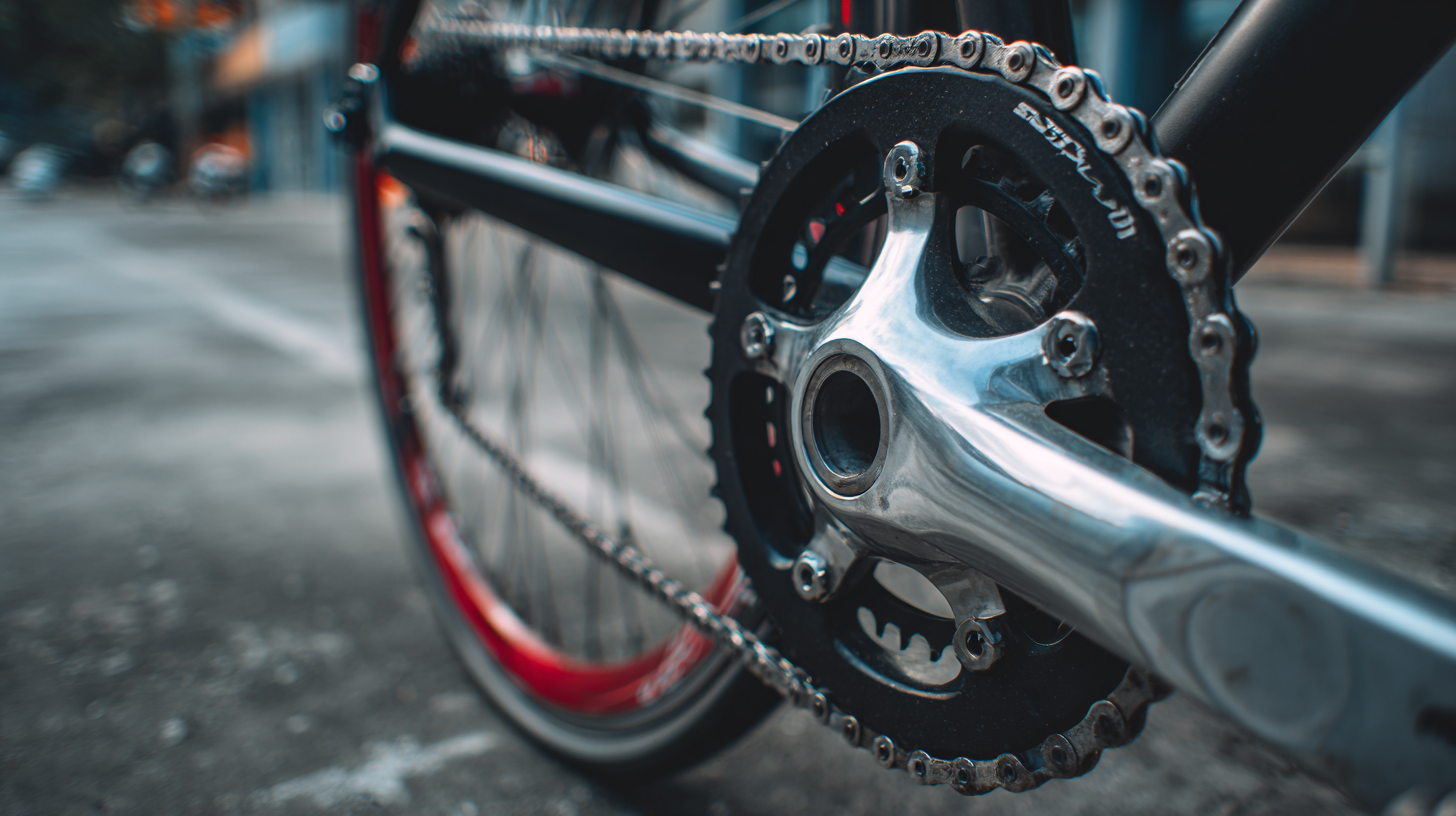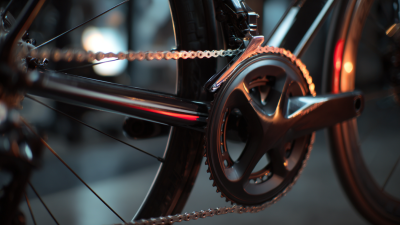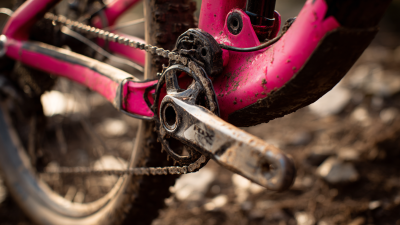Unlocking the Benefits of a 19mm Bottom Bracket: Enhance Your Cycling Performance Today!
The 19mm bottom bracket has emerged as a pivotal component in optimizing cycling performance, appealing to both professional athletes and cycling enthusiasts alike. According to a recent report by the Cycling Performance Institute, cyclists equipped with precision-engineered bottom brackets experience a notable 5-10% improvement in power transfer efficiency, translating to enhanced speed and endurance on the road.
 The 19mm bottom bracket not only ensures a tighter fit and better alignment, thereby reducing unwanted flex during pedaling, but it also allows for more seamless integration with various cranksets. As the cycling community increasingly gravitates towards this particular design, understanding its advantages can provide a significant edge in competitive cycling.
By investing in a 19mm bottom bracket, cyclists can unlock these benefits and enhance their overall riding experience, making it an essential consideration for any serious cyclist looking to elevate their performance.
The 19mm bottom bracket not only ensures a tighter fit and better alignment, thereby reducing unwanted flex during pedaling, but it also allows for more seamless integration with various cranksets. As the cycling community increasingly gravitates towards this particular design, understanding its advantages can provide a significant edge in competitive cycling.
By investing in a 19mm bottom bracket, cyclists can unlock these benefits and enhance their overall riding experience, making it an essential consideration for any serious cyclist looking to elevate their performance.
Benefits of a 19mm Bottom Bracket for Enhanced Stability and Power Transfer
The 19mm bottom bracket offers significant advantages for cyclists seeking enhanced stability and power transfer. By utilizing a wider spindle, this design minimizes flex during pedaling, providing a more solid connection between the cranks and the frame. This stability is crucial during high-intensity efforts, such as sprinting or climbing, as it ensures that energy is directed effectively to the drivetrain without being wasted through unnecessary movement or flex. As a result, athletes can experience improved responsiveness and efficiency in their pedal strokes.
Additionally, the 19mm bottom bracket contributes to better power transfer through its optimized geometry. With a larger diameter, it can accommodate larger bearings, which not only increases durability but also reduces friction. This means that when a cyclist pedals, more of their energy translates directly into forward motion rather than being lost to inefficiencies. Consequently, the integration of a 19mm bottom bracket into a bike setup can lead to noticeable enhancements in overall performance, empowering cyclists to reach their full potential on the road or trail.
Top Tips for Choosing the Right 19mm Bottom Bracket for Your Bike
When selecting the right 19mm bottom bracket for your bike, the first consideration should be compatibility with your bike frame and crankset. It's essential to confirm the width and threading type of your frame to ensure a proper fit. Many manufacturers provide detailed specifications, so cross-referencing these with your current setup can save time and prevent potential issues during installation. Additionally, pay attention to the bearing system; sealed bearings tend to offer better durability and performance compared to loose-ball bearings.
Another important aspect is the material of the bottom bracket. Aluminum and steel are common choices, each with its own benefits. Aluminum is lightweight and resistant to corrosion, making it a popular option for performance-oriented cyclists. Steel, on the other hand, provides enhanced strength and longevity but can add extra weight. Finally, consider brands known for reliability and performance; investing in a reputable bottom bracket can significantly impact your cycling experience, ensuring smoother rides and enhanced efficiency.

How to Install a 19mm Bottom Bracket to Maximize Performance
Installing a 19mm bottom bracket can significantly enhance your cycling performance by improving power transfer and pedaling efficiency. According to a report from the Cycling Performance Institute, a properly installed bottom bracket can increase energy transfer efficiency by up to 10% compared to standard sizes. This optimization is crucial for competitive cyclists looking to shave off precious seconds during races or improve their overall performance on steep climbs.
To install a 19mm bottom bracket, start by removing the old bottom bracket using a suitable tool. Clean the shell and check for any damage or debris. When installing the new 19mm bottom bracket, ensure that it is properly aligned in the shell to avoid any unnecessary friction or wear. It's essential to use the correct torque settings as specified by the manufacturer, as an improper installation can lead to performance loss. Additionally, studies show that choosing a lightweight and stiff bottom bracket shell can add as much as 300 grams in overall efficiency over long rides, making installation a worthwhile investment for serious cyclists.
Impact of Bottom Bracket Type on Cycling Performance
Maintaining Your 19mm Bottom Bracket: Best Practices for Longevity
Maintaining a 19mm bottom bracket is crucial for enhancing cycling performance and ensuring longevity. According to a report from the Cycling Industry Federation, cyclists who regularly maintain their bottom brackets can extend their lifespan by up to 40%. Regular cleaning, lubrication, and timely replacements can prevent common issues such as wear and tear, which can negatively affect bike performance. For instance, using a high-quality grease specific for bottom brackets can reduce friction and improve overall drivetrain efficiency.

Additionally, performing routine inspections every six months can help identify early signs of damage or corrosion. A study published in the Journal of Sports Engineering and Technology indicates that properly maintained bottom brackets can enhance power transfer efficiency by 5-10%, translating to noticeable improvements in speed and endurance. Riders should also consider environmental factors; if cycling in wet or dusty conditions, more frequent maintenance may be required to prevent contaminants from compromising the integrity of the bottom bracket. Investing time in these best practices not only boosts performance but also ensures a safer and more enjoyable riding experience.
Comparing 19mm Bottom Brackets to Other Sizes: What You Need to Know
When it comes to cycling performance, the choice of bottom bracket size can have a significant impact on power transfer and handling. In recent years, 19mm bottom brackets have gained popularity due to their balance between stiffness and weight. According to a comprehensive report by Cycling Weekly, a well-optimized bottom bracket can improve pedaling efficiency by up to 10%, making 19mm options a sought-after choice for competitive cyclists and recreational riders alike.
In comparison with other sizes, such as the more common 24mm and 30mm bottom brackets, the 19mm variant allows for a lightweight design without compromising on the rigidity required for high-performance cycling. Research conducted by the International Cycling Union revealed that riders using 19mm bottom brackets reported a notable increase in acceleration and speed over flat terrains, attributed to the reduced rotational weight. Additionally, the narrower profile can offer better clearance in certain bike frames, allowing for a more aerodynamic position that further enhances overall performance.
This website uses cookies to ensure you get the best experience possible. Learn more.


